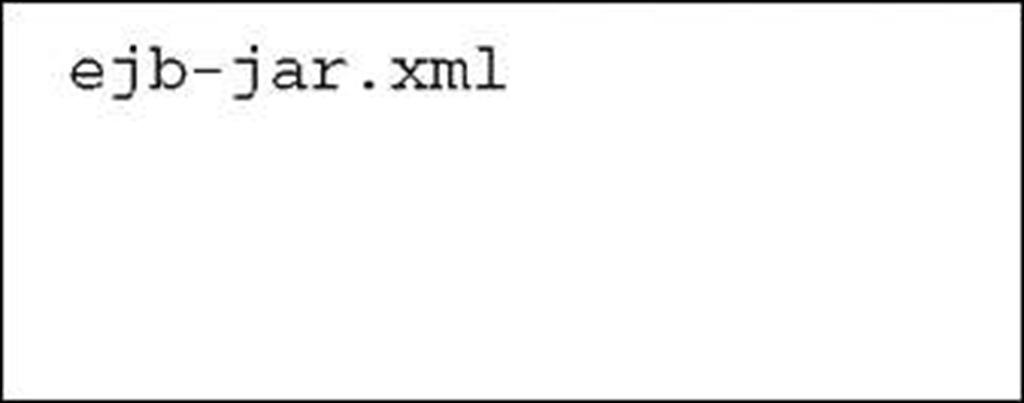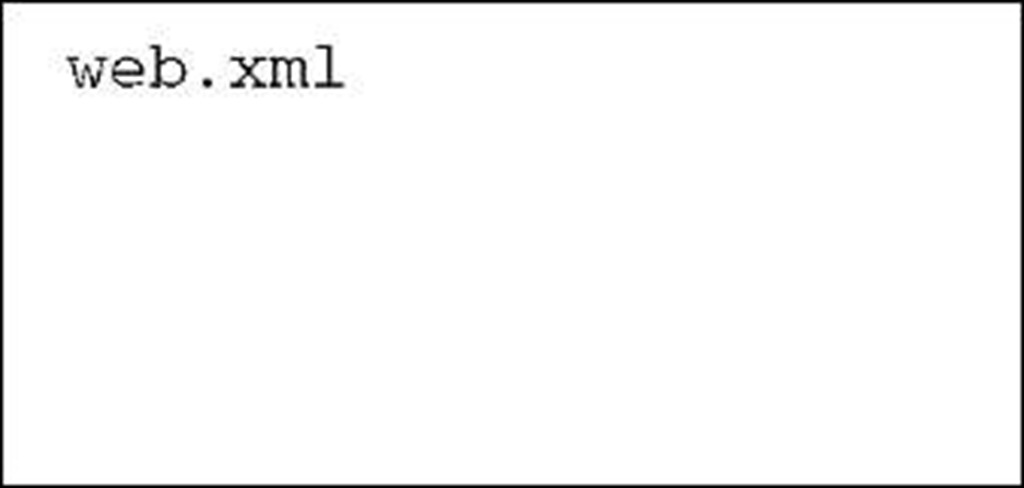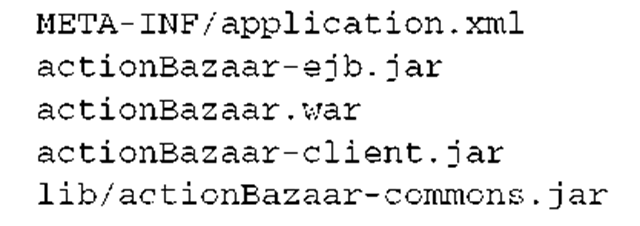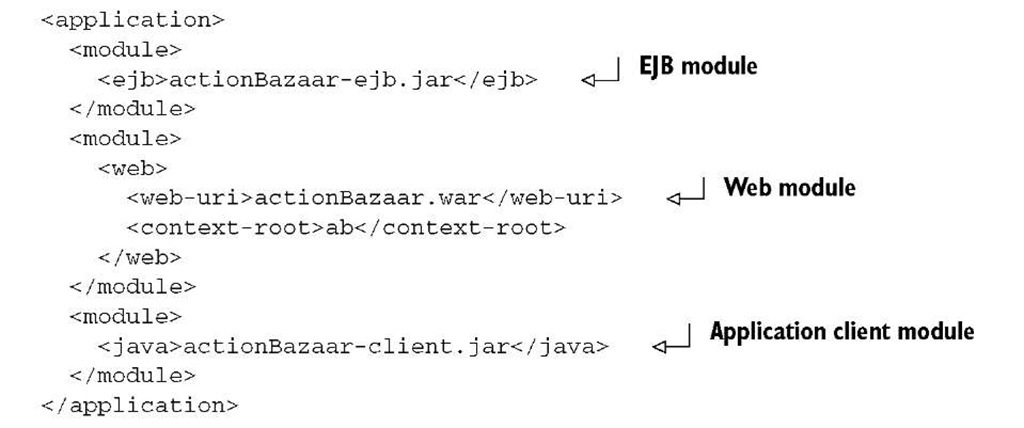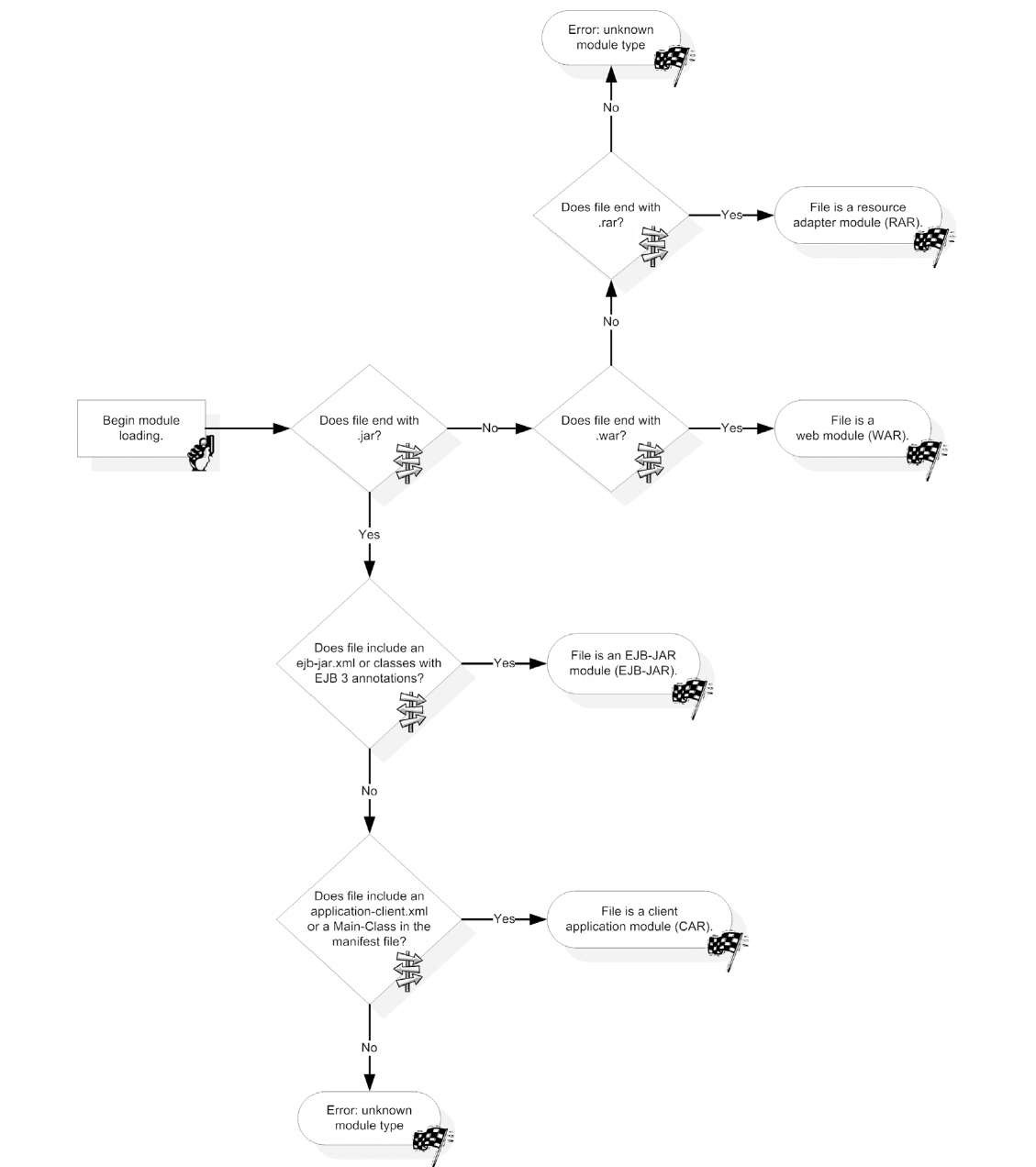A typical enterprise Java application may contain several Java classes of different types, such as EJBs, servlets, JavaServer Faces (JSF) managed beans, and entity classes, as well as static files such as JSPs and HTML files. As we discussed in topic 1, EJBs run in the EJB container whereas web applications such as servlets and JSF managed beans run in the web container. To run your application you have to make it available to the Java EE application server. This is known as deployment. Since EJB is a core part of the Java EE specification, you have to follow the Java EE standard for deployment.
To understand EJB packaging, you must consider how it fits into the bigger picture of Java EE packaging and know what constitutes a complete enterprise Java application. Up to this point we have focused on using EJB components such as session beans and MDBs to build business logic and JPA entities to implement your persistence code. However, your application will not be complete without a presentation tier that accesses the business logic you built with EJBs. For example, the EJBs we built for ActionBazaar do not make sense unless we have a client application accessing them. Most likely, you’ve used standard technologies such as JSP or JSF to build the web tier of your applications. These web applications, together with EJBs, constitute an enterprise application that you can deploy to an application server.
To deploy and run an application, you have to package the complete application together—the web module and EJBs—and deploy to an application server. Usually you will group similar pieces of the application together in modules. Java EE defines a standard way of packaging these modules in JAR files, and specifies the formats for these JARs. One of the advantages of having these formats defined as part of the specification is that they are portable across application servers.
Table 11.1 lists the archives or modules supported by Java EE 5 and their contents. Note that each archive type is used for packaging a specific type of module, such as EJB or web. For instance, a WAR is used to package a web-tier application module, and the EAR file is intended to be the uber archive containing all the other archives so that in the end, you’re only deploying one file. The application server will scan the contents of the EAR and deploy it. We discuss how an EAR is loaded by the server in section 11.1.2.
Table 11.1 Enterprise Java applications need to be assembled into specific types of JAR files before they can be deployed to an application server. These are the available module types as specified by Java EE.
To create these files, you can use the jar utility that comes with JDK. The final step is to assemble all the JAR files into one EAR file for deployment. In 11.3.1 we show you a build script that creates a JAR file. Each of these JAR types contains an optional deployment descriptor that describes the archive. As we have been discussing throughout this topic, you can use metadata annotations instead of a deployment descriptor.
In this topic, we focus primarily on the EAR file and the EJB-JAR file, which contains the session and message-driven beans, as well as entities.
It’s worth mentioning that entities can be packaged in most archive types. For example, the ability to package entities in WARs allows you to use the EJB 3 JPA in simple web applications or with lightweight frameworks such as Spring. Note that entities are not supported in RAR modules. This statement, however, begs the question of why Java EE does not have a different archive type to package EJB 3 entities, just as JBoss has the Hibernate Archive (HAR) to package persistence objects with Hibernate’s O/R framework.
You may know the answer to this question if you have followed the evolution of the EJB 3 specification. For those who haven’t, we now regale you with Tales from the Expert Group (cue spooky music)…
During the evolution of the EJB 3 Public Draft, the PAR (Persistence Archive) was introduced, which mysteriously vanished in the Proposed Final Draft. A huge, emotional battle was fought in the EJB and Java EE expert groups over whether to introduce a module type for a persistence module at the Java EE level, and suggestions were sought from the community at large, as well as from various developer forums. Many developers think a separate persistence module is a bad idea because entities are supported both outside and inside the container. Considering that persistence is inherently a part of any enterprise application, it makes sense to support packaging entities with most module types, instead of introducing a new module type specialized for packaging entities.
Now that you know what modules are supported and a little about how they were arrived at, shall we take a quick peek under the hood of an EAR module?
Dissecting the EAR file
To understand how deployment works, let’s take a closer look at the EAR file, the top-level archive file that contains other Java EE archives when it is deployed to the application server. For instance, the ActionBazaar application contains an EJB module, a web module, a JAR containing helper classes, and an application client module. The file structure of the EAR file that ActionBazaar uses looks like this:
application.xml is the deployment descriptor that describes the standard Java EE modules packaged in each EAR file. The contents of application.xml look something like listing 11.1.
Listing 11.1 Deployment descriptor for the ActionBazaar EAR module
If you review the EAR file descriptor in listing 11.1, you’ll see that it explicitly identifies each of the artifacts as a specific type of module. When you deploy this EAR to an application server, the application server uses the information in the deployment descriptor to deploy each of the module types.
Java EE 5 made the deployment descriptor optional, even in the EAR. This is a departure from previous versions ofJava EE, where it was mandatory. The Java EE 5.0-compliant application servers deploy by performing automatic detection based on a standard naming convention or reading the content of archives; see http://java.sun.com/blueprints/code/namingconventions.html.
Next, let’s take a look at how application servers deploy an EAR module.
Loading the EAR module
During the deployment process, the application server determines the module types, validates them, and takes appropriate steps so that the application is available to users. Although all application servers have to accomplish these goals, it’s up to the individual vendor exactly how to implement it. One area where server implementations stand out is in how fast they can deploy the archives.
While vendors are free to optimize their specific implementation, they all follow the specification’s rules when it comes to what is required to be supported and in what order the loading occurs. This means that your application server will use the algorithm from figure 11.1 when attempting to load the EAR file that contains modules or archives from table 1.1.
Before we delve into how EJB components and entities are packaged, let’s briefly discuss what class loading is and how it works in the Java EE environment.
Figure 11.1 Rules followed by application servers to deploy an EAR module. Java EE 5 does not require a deployment descriptor in the EAR module that identifies the type of modules packaged. It is the responsibility of Java EE container to determine the type of module based on its name (extension) and its content. It does so by following this algorithm.


